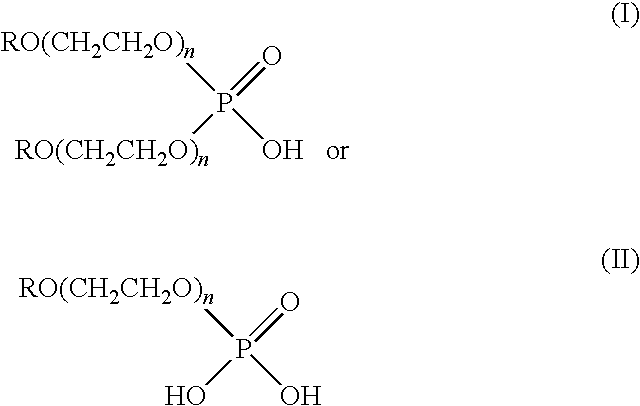Method of lubricating a conveyor belt
a technology of lubricating conveyor belts and lubricating rollers, which is applied in the direction of lubricant composition, transportation and packaging, fuels, etc., can solve the problems of high water usage rate, relatively high effluent cost for users, and none of the above-described (mostly aqueous) lubricants are employed in a dry lubrication process, etc., and achieve the effect of reducing the volumina
- Summary
- Abstract
- Description
- Claims
- Application Information
AI Technical Summary
Benefits of technology
Problems solved by technology
Method used
Image
Examples
examples
[0077]In the following, all percent (%)-volumes of components of compositions are expressed as percent-by-weight (wt.-%) unless indicated otherwise.
1. Track Conveyor Testing
1.1. Description of Test Method Lubricity and Durability
1.1.1. Test Track
[0078]The trials are carried out on a pilot conveyor facility. This pilot conveyor contains stainless steel and plastic (Acetal) test tracks.
1.1.2. Test Procedure
[0079]The following standard test procedure is applied:[0080]1. Prior doing any trials, ensure that the test track is free of residues. If necessary, clean the track with an acidic or alkaline cleaner and / or with alcohol to remove any traces of lubricants from the previous trial.[0081]2. Rinse the track with water (approx. 10 min) and dry it with Kleenex.[0082]3. Start the program for the digital track conveyor system.[0083]4. After 2 min: pipette 10 ml of the respective composition directly on the chain. This process has to be done very carefully and slowly to ensure, that the whol...
PUM
| Property | Measurement | Unit |
|---|---|---|
| size | aaaaa | aaaaa |
| size | aaaaa | aaaaa |
| concentrations | aaaaa | aaaaa |
Abstract
Description
Claims
Application Information
 Login to View More
Login to View More - R&D
- Intellectual Property
- Life Sciences
- Materials
- Tech Scout
- Unparalleled Data Quality
- Higher Quality Content
- 60% Fewer Hallucinations
Browse by: Latest US Patents, China's latest patents, Technical Efficacy Thesaurus, Application Domain, Technology Topic, Popular Technical Reports.
© 2025 PatSnap. All rights reserved.Legal|Privacy policy|Modern Slavery Act Transparency Statement|Sitemap|About US| Contact US: help@patsnap.com


